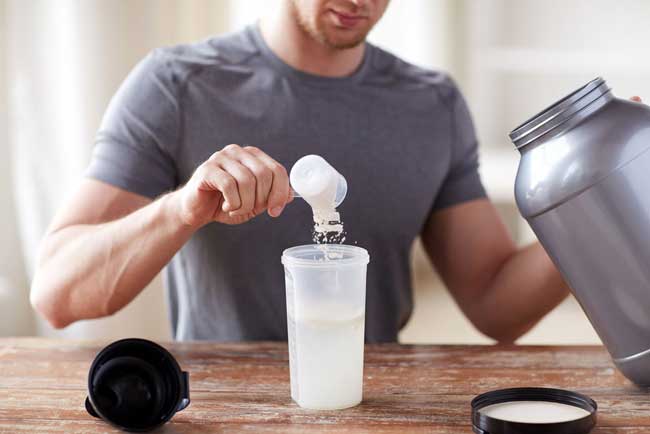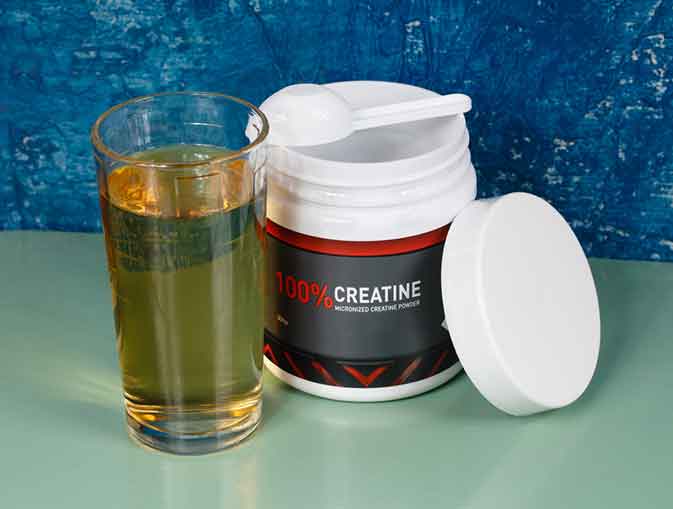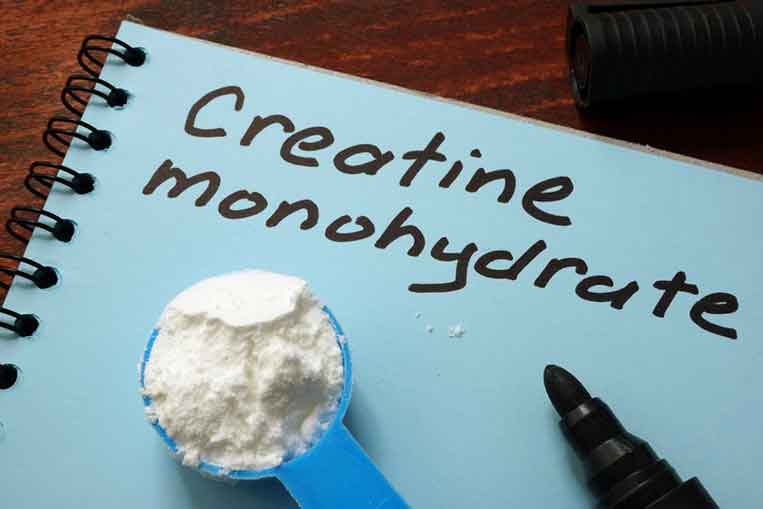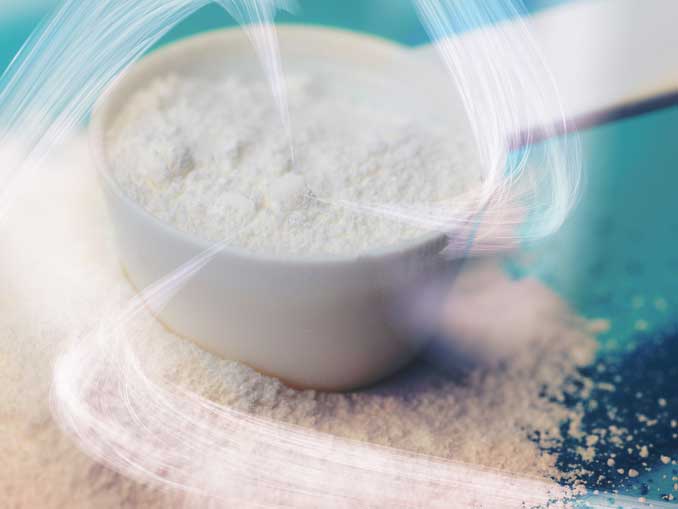Creatine and Beta Alanine are often compared. Is it fair to analyze their differences though? Although similar they are responsible for different workout benefits.

Content Table
Creatine or Beta Alanine?
Although similar, it is wise to note that creatine helps with short, intense bursts of power, while beta alanine can prevent lactic acid from getting into your muscles and making you fatigue more during your workouts.
Firstly I am going to give an overview of Creatine and what it does.
Creatine Monohydrate is the Granddaddy of strength supplements. If you ever meet anyone who tells you to avoid creatine, find a computer, google ‘moron’…and then smack them over the head with the keyboard.
I jest (but not really).

Once upon a time, I was asked to review a product – for the sake of anonymity, let’s call it SuperCreatine.
SuperCreatine was a “nitric oxide booster” in capsule form, and one of the “benefits” they listed in the marketing hype was “Creatine Free!!”
Not only would SuperCreatine fail to raise the nitric oxide levels of a growth-stunted dung beetle, but the manufacturers thought its distinct lack of creatine was a selling point.
My review was honest. They didn’t send me any more free crap.
Creatine and Phosphocreatine for ATP Cycle
Creatine occurs naturally in your body. It’s synthesized in your liver and kidneys at a rough rate of 1 gram per day.
It’s also partially replenished via your dietary intake, which can provide another single gram per day.
Those 2 grams play a pivotal role in the recycling of ATP (adenosine triphosphate) from ADP (adenosine diphosphate).
It does this by being converted to phosphocreatine once it reaches the muscles or brain, and donating phosphate groups when ADP needs to be phosphorylated back to ATP.
It’s a phosphate donor.
Most of your creatine stores are in your skeletal muscle as phosphocreatine. Some is in your brain, floating around in your blood, or in other organs and tissues.
ATP is the principal energy molecule in your body, and for all life as we know it. It’s more like a broker though, acting as an intermediary between stored energy and processes that require it.

Creatine Monohydrate and Saturating Your Cells
Here’s the fun part about: you have room to store much more than you synthesize or obtain from your diet.
The two gram turnover that I talked about in the section above is satisfactory for people who don’t engage in anaerobic resistance training regularly.
However, if you lift, and your sets often go into the red, your creatine stores can be quickly depleted as phosphate groups are donated faster than they can be replenished.
So, if you take an appropriate dose on a daily basis, not only will it mitigate your energy deficit problem, it will eventually saturate your cells.
Saturation provides your muscles with a reservoir of phosphocreatine to recycle enough ATP for your daily gym shenanigans.
What Can Creatine Do For You?
Let’s put some numbers on this, shall we?
A meta-analysis of creatine studies found that creatine supplementation adds:
8% to the user’s Squat strength
3% to the user’s Leg Press strength
Another meta-analysis showed improvements in Bench strength and lean body mass.
The type of training it helps with is short bursts of force output that go into anaerobic respiration.
Anything less than 30 seconds is where creatine is at home, i.e. most mass/strength building sets.
Some efforts lasting between 30 seconds and 2.5 minutes can also benefit from creatine supplementation, like a volume set of squats for example.
Effects become unreliable for efforts lasting longer than two and a half minutes.

What About Different Forms of Creatine?
Creatine monohydrate (CM) is the cheapest form of creatine. Companies can no longer make oodles of profit from CM, so they had to shake up the business and make some fancy sounding creatines.
The thing is, CM provides the closest to 100% absorption out of any type of creatine.
Also, those creatine powders mixed with something for “ultra fast absorption” are missing the point. Creatine doesn’t need to be absorbed super fast.
All you have to do with CM is build it up to the point of cell saturation. When you work out, you use some of it, and the next time you take a dose, you just top up your creatine pool.
Absorption speed is irrelevant. And spending more money to get it is silly.
The only concession I have made is to buy “micronized” CM, because it mixes better with my protein shake.
Should I Cycle Creatine?
There’s no real point in cycling creatine. If you come off it, you’ll only have to re-saturate your cells again when you go back on it.
There’s no safety concern with using creatine long term at the doses recommended below.
How Much Should I Take and What About Loading Doses?
Between 3 and 6 grams per day appears work out for most people. Taking this amount will slowly saturate your cells but you should still have a surplus to requirements during the saturation phase.
Loading creatine by taking 20 to 25 grams per day (split into four or five separate doses to be easier on the stomach) for about five days will help you reach saturation quicker.
Loading can increase the water retention effect (creatine initially pulls water into the muscles), and high doses can cause mild stomach cramps…plus, there’s no real need to load.
Personally I throw 5 grams into my post-workout shake.
Job done.
Is Creatine Safe?
Remarkable so. Some old studies were super cautious about creatine so you might read that the long term effects are unknown or that it might tax the kidneys.
Long term use of high doses of creatine are still unknown because nobody is dumb enough to take large doses for years, because it’s not necessary. Five grams a day is fine.
Some people should avoid loading creatine just in case. They include (and might not be limited to) people with high blood pressure, people with reduced kidney function.
That’s Creatine covered in a very concise manner – let’s talk about Beta Alanine.
What is Beta Alanine?
Do you know what beta-alanine is doing inside your body when you take it? Is it necessary to take it before a workout? And what’s that weird tingly feeling all about? Is it safe?

All the questions are valid, and a few might yield surprising answers for some of you.
Beta-Alanine is one of the most common ingredients in today’s pre-workout supplements.
It’s become so accepted in the sports supplement industry that if you don’t see around 3.2 grams of the patented standard beta-alanine extract CarnoSyn in your pre-workout, you’d have to wonder why.
Hopefully, most people using it are aware of its effects, and understand its capabilities and shortcomings. If not, this is the article for you because you should know what you’re putting in to your body.
Beta Alanine – A Lowly Non-Essential Amino Acid?
We tend to put more stock in the essential amino acids as supplements because we can’t synthesize them within our bodies.
Essential AAs are therefore obtained from out diet, and we can top them up or add to them with supplements.
There are 9 essential AAs but the ones you are most aware of are probably the branched chain amino acids (BCAAs), Leucine, Isoleucine and Valine. That’s because of their importance in muscle tissue, energy and recovery.
Beta-Alanine is a non-essential amino acid. The non-essential AAs are often thought of as less important but that’s a mistake.
In fact, non-essential AAs like beta-alanine are often the limiting factors in the bio-chemical processes that also involve essential amino acids.
This will make more sense if we talk about Carnosine.
Carnosine, Beta-Alanine and Histidine
Beta-Alanine is made in your liver and from there travels to, and enters, your muscle tissue. Once there it hooks up with the essential amino-acid, Histidine.
The two together form a dipeptide (two amino acids linked together) called Carnosine.
Carnosine cannot enter muscle tissue so it has to be made inside it. There it is stored for use as a buffer to lactic acid and protection against oxidative stress in general.
It can however be broken down to its constituent substrates (beta-alanine and histidine) in the liver, which can then travel to muscle tissue and reverse the process.
That said, it is accepted that beta-alanine supplementation is the most efficient and preferred route for increasing muscle carnosine levels.
Moreover, beta-alanine is the limiting step in carnosine production, unless there is a histidine deficiency, and so it only makes sense for athletes and bodybuilders to supplement with BA.

What Does Carnosine Do For My Workouts?
Most people associate beta-alanine with giving them the extra gas for one or two more reps in a set.
This effect comes from the additional muscle carnosine that supplementing BA provides. Carnosine acts as a buffer to acid – lactic acid included – and slowing the fatiguing effects of a drop in pH level.
Several studies have found that beta-alanine can improve physical performance, reduce fatigue and even increase the hypertrophic effect of training because of the lactic acid buffering effect.
- Endurance performance in men
- Performance and body composition in college athletes
- Cardiovascular improvements after HIIT training with women
It’s quite specific in doing this though. The exercise range where beta-alanine can help you squeeze some more energy out is between 60 seconds to 4 minute of high output training.
Imagine an 800 or 1500 meter race, or high volume sets of squats, and you’re in the right zone.
Are There Any Other Benefits of Beta-Alanine Supplementation?
Some interesting research shows that BA can attenuate the aging process of cells. This is once again due to carnosine’s protective actions, defending cells of oxidative damage.
There are two ways in which BA might help slow the aging process: by preserving DNA from the shortening effect of multiple replications, or by slowing the build-up of toxic altered protein by-products in cells.
Supplement Timing
I mentioned at the beginning of this article that beta-alanine had become almost ubiquitous in the context of pre-workout powder supplements.
The thing is, it’s something that you accumulate, in a similar way to creatine monohydrate.
Over several days of taking 2 to 5 grams of BA per day you will basically create a storage reservoir of carnosine within your muscle tissue.
This is all to say that you can actually supplement BA separately, and its efficacy is not dependant on timing.
Therefore, if you have a favourite pre-workout blend that doesn’t include BA, or you don’t enjoy the tingles (parasthesia – see below) during a workout, or after a large dose, then you can split the BA servings up and take them anytime you want.
Parasethesia – A Harmless Side Effect
Supplementing with beta-alanine can cause a harmless side effect known as parasthesia – a tingly skin sensation that is mostly felt in the face, neck and shoulders but that can spread the the extremities.
It tends to happen when larger doses (2 to 5 grams) are taken at once, which of course is the case where pre-workout supplements are concerned.
Again, though, it’s not a harmful effect. It’s simply a case of whether you mind it or not. Some people enjoy it, me included.
Creatine or Beta Alanine Which is Best – Conclusion
If you ask a hundreds personal trainers, bodybuilders or supplement to choose either creatine or Beta Alanine you will most likely get an equal split between Creatine and Beta Alanine advocates.
So that kind of answers the question. Why choose – use them both as they are complimentary.
